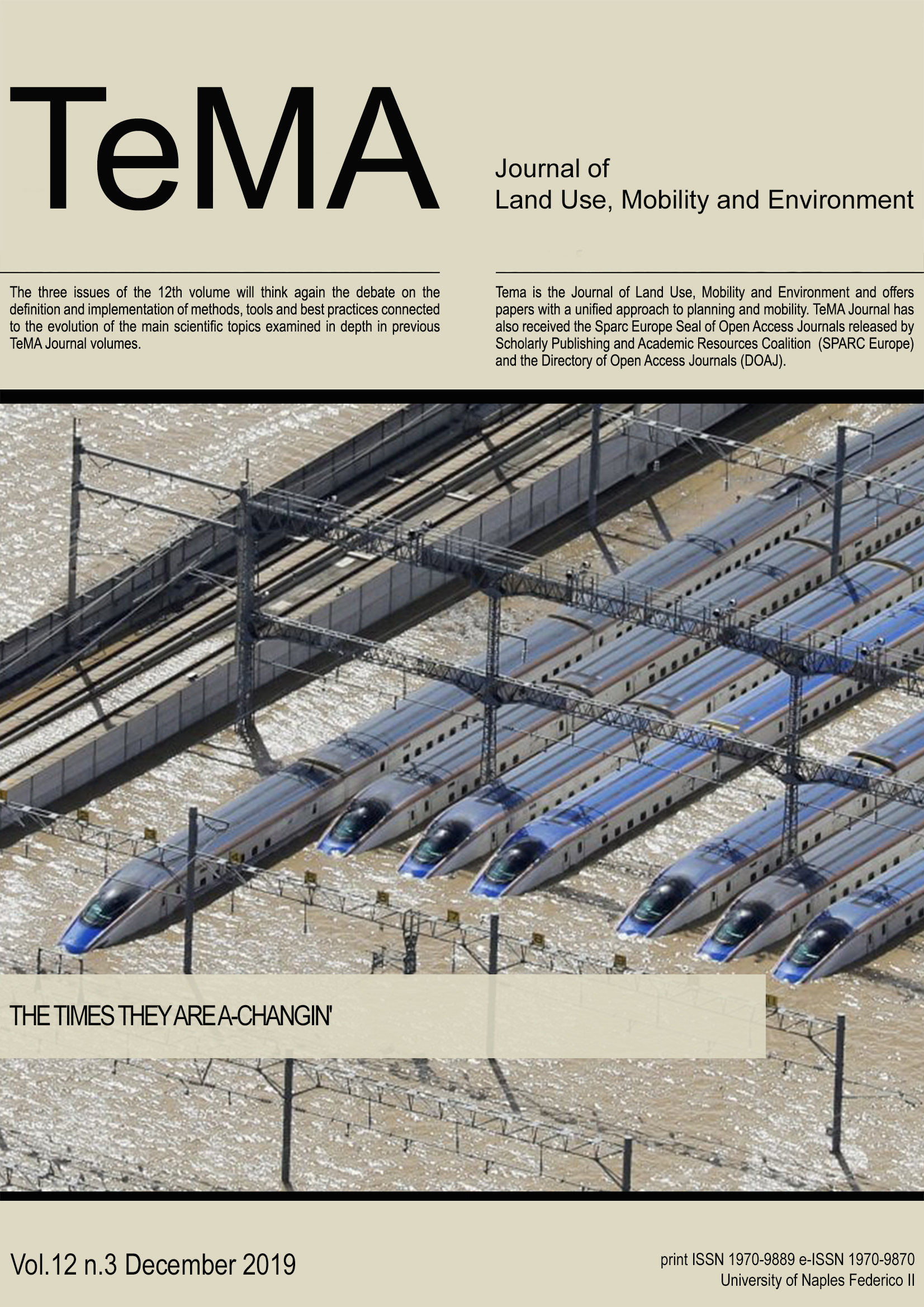Elders’ quality of life. A method to optimize pedestrian accessibility to urban services.
Abstract
The progressive ageing of population requires rethinking the spatial planning of the urban spaces and activities to guarantee the best accessibility and usability to urban services of interest for the elderly segment of the population. In this perspective, the paper provides a methodology oriented to reorganize the urban services to better satisfy the renewed needs of over 65, by classifying the areas of a city according to (i) the levels of urban accessibility and (ii) the Functional Accessibility Soft zones (FASzones). In fact, the FASzones are the parts of the city where elderly can easily reach their services of interest due to the presence of "optimal" pedestrian routes fitting their behaviours. The results provide local decision-makers with useful suggestions for deciding where and how to in on the distribution and location of services, in order to increase urban accessibility for the over 65 by improving their quality of life. This methodological aim represents a first step in the broader MOBILAGE research work aimed at defining strategies, tools and actions to improve the pedestrian accessibility to urban services and places for elderly users.
Downloads
Copyright (c) 2019 TeMA - Journal of Land Use, Mobility and Environment

This work is licensed under a Creative Commons Attribution 4.0 International License.
Authors who publish in this journal agree to the following:
1. Authors retain the rights to their work and give in to the journal the right of first publication of the work simultaneously licensed under a Creative Commons License - Attribution that allows others to share the work indicating the authorship and the initial publication in this journal.
2. Authors can adhere to other agreements of non-exclusive license for the distribution of the published version of the work (ex. To deposit it in an institutional repository or to publish it in a monography), provided to indicate that the document was first published in this journal.
3. Authors can distribute their work online (ex. In institutional repositories or in their website) prior to and during the submission process, as it can lead to productive exchanges and it can increase the quotations of the published work (See The Effect of Open Access)

